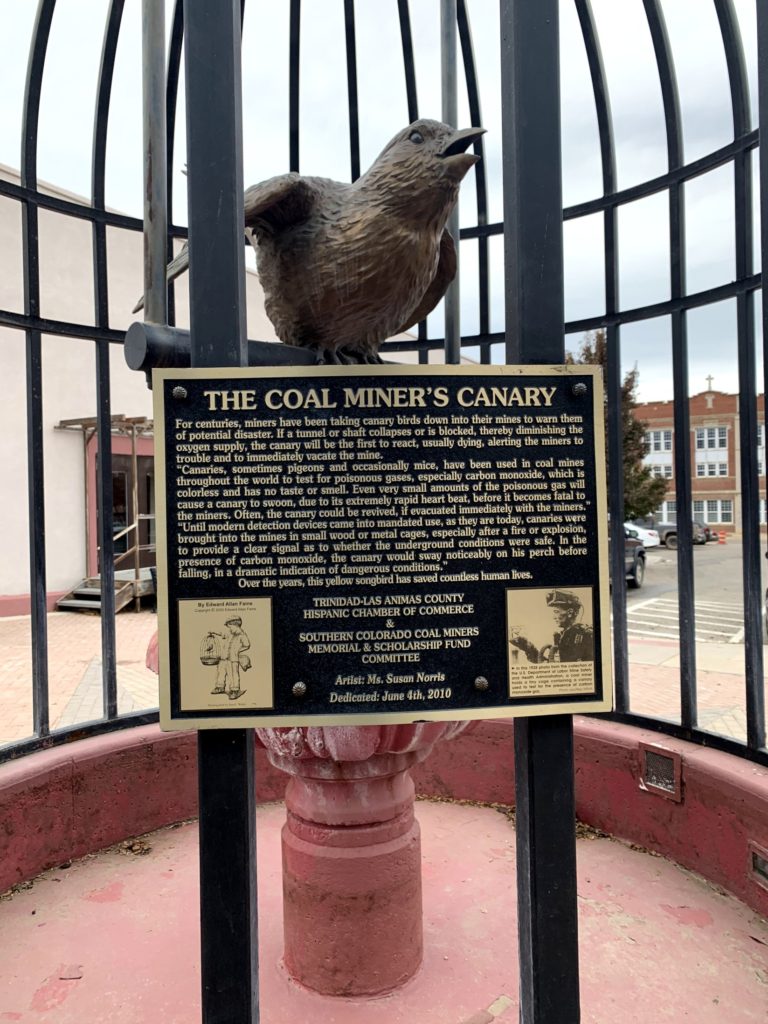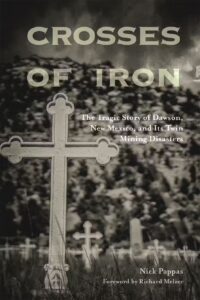SUBSCRIBE!
for updates to my blog
and to my events schedule
The time ‘a canary in a coal mine’ meant exactly that

Who hasn’t heard the expression “a canary in a coal mine”?
Today, the phrase generally refers to a person or object equipped to detect danger at the earliest possible moment.
But not long ago the words held a more literal meaning, reflecting the use of canaries in coal mines to detect whether the air was safe for miners to breathe, particularly after a fire or explosion.
And these itty-bitty birds played a big role in the wake of the 1913 mine explosion that claimed the lives of 263 men in Dawson, New Mexico.
The founder
John Scott Haldane, dubbed “the father of oxygen therapy,” is credited with discovering the connection between canaries and deadly gases commonly found in coal mines.
During his research in the early 1900s, the Scottish physiologist found that canaries were far more sensitive to toxic gases than humans and other small species, such as chickens, guinea pigs, mice, pigeons, and rabbits. A swooning canary, therefore, signaled it was time for miners to scurry to safety.
Early use
One of the first recorded uses of the songbirds occurred in December 1906 after an explosion of gas and coal dust at the Urpeth Colliery in northern England. The blast claimed the lives of four men and injured a 15-year-old boy.
After the explosion, mining expert W.C. Blackett, a caged canary in hand, accompanied the mine inspector into the tunnel, according to a story in the Yorkshire Telegraph and Star. The men walked toward the source of the blast until they found the body of a miner.
“Here he (Blackett) saw the bird fall from its perch, and, incautiously taking a breath of air himself, his knees gave way to a small extent, but he managed to scramble out into the better air, taking the bird with him,” the newspaper reported. “The bird recovered within three or four minutes, and again got on its perch. It was most extraordinary to see …”
Dawson disaster
Seven years later, canaries played a similar role in the aftermath of the Oct. 22, 1913, mine explosion in Dawson, the second-deadliest in the country’s history.
In the colorful prose of an El Paso Herald reporter: “Canary birds, chipper, little, yellow canaries, are playing an important part in the rescue work which has been in progress at the scene of the Dawson, N.M., mine disaster since the fatal Thursday afternoon when 200 odd men went to a living death like the snuffing of as many candles.”
Dr. W.L. Brown, surgeon for the El Paso & Southwestern Railroad, spent several days in Dawson tending to the injured before returning to El Paso. Once there, he gave the newspaper an eyewitness account of how rescuers were relying on their feathery friends.
“Each of the mine rescue cars had cages filled with these little songbirds, whose last songs were to be dirges of death,” he told the newspaper, explaining their critical role in detecting both white damp (carbon monoxide) and black damp (carbon dioxide).
“They are taken into the mine watched closely. If they die suddenly, without a tremor of their little limbs, the presence of the dreaded white damp is known and retreat is begun at once unless the rescue crew is equipped with oxygen helmets. If the bird is seen to go into convulsions before death, black damp and black death is near and advance must cease. This is a sure test and these little birds are invaluable in testing for the noxious gases.”
Miners’ pets
Brown was not alone in his assessment. Later that year, addressing the winter meeting of the Coal Mining Institute of America in Pittsburgh, attendee Luther Neal spoke enthusiastically about the use of canaries in mine exploration work.
“So I think that in gaseous sections where, as always, there are mine explosions to be expected, the mine offices should be equipped with canary birds in cages so that, in case of disaster, the rescue parties could have them available for use in the mine,” he said. “Canary birds would be very inexpensive, and the rescue men would probably make pets of them and give them every care.”
That sweet sentiment was supported by the design of the cages, which consisted of ventilation holes, an airtight door, and a small bottle of oxygen so miners could revive the birds before it was too late.
Ultimately, canaries would be replaced by electronic gas detectors, though some mines relied on the birds well into the mid-1980s.
Trinidad memorial
The important role played by these real-life Tweety birds is not lost in the history of coal mining in the American Southwest.
On June 4, 2010, the Trinidad-Las Animas County Hispanic Chamber of Commerce and the Southern Colorado Coal Miners Memorial & Scholarship Fund Committee dedicated The Coal Miner’s Canary monument in the park adjacent to the coal mining museum in downtown Trinidad.
The monument, consisting of a bronze canary perched inside a large cage, rests a short distance from a coal miner’s memorial and a statue of Louis Tikas, the Greek labor leader who was killed by the Colorado National Guard during the Ludlow Massacre in 1914.
“Over the years,” the memorial inscription concludes, “this yellow songbird has saved countless human lives.”
Crosses of Iron
by Nick Pappas
Now available to order from:
University of New Mexico Press
… and other booksellers.
Audiobook version available to order from …
… and other audiobook sellers.

